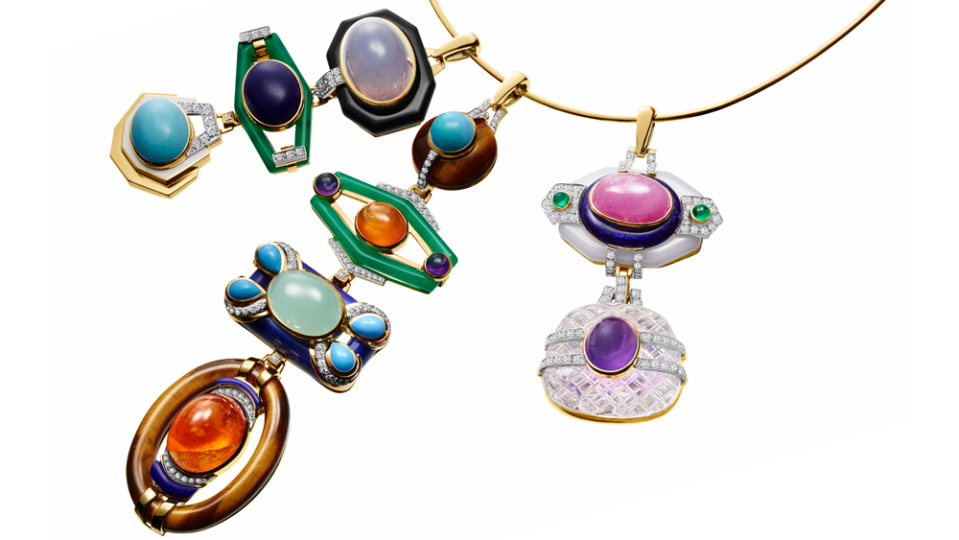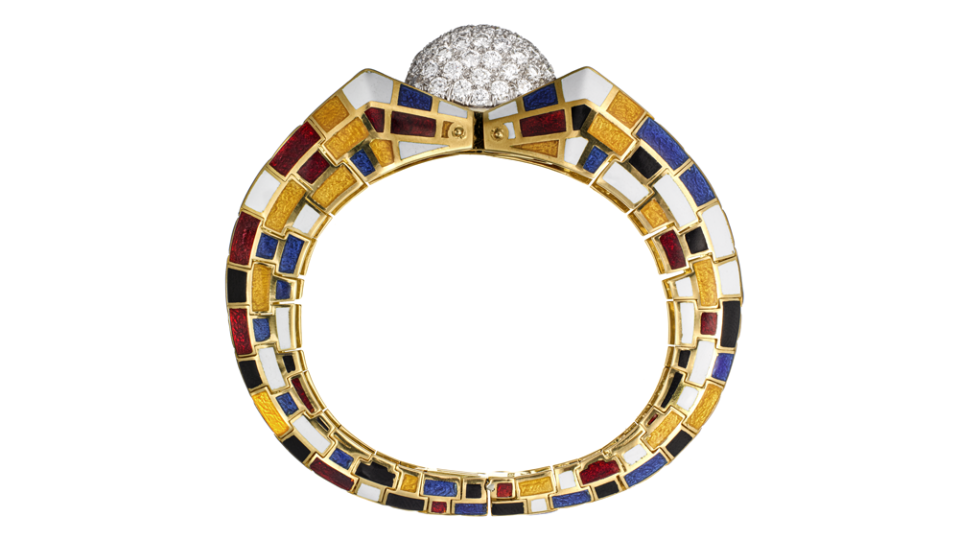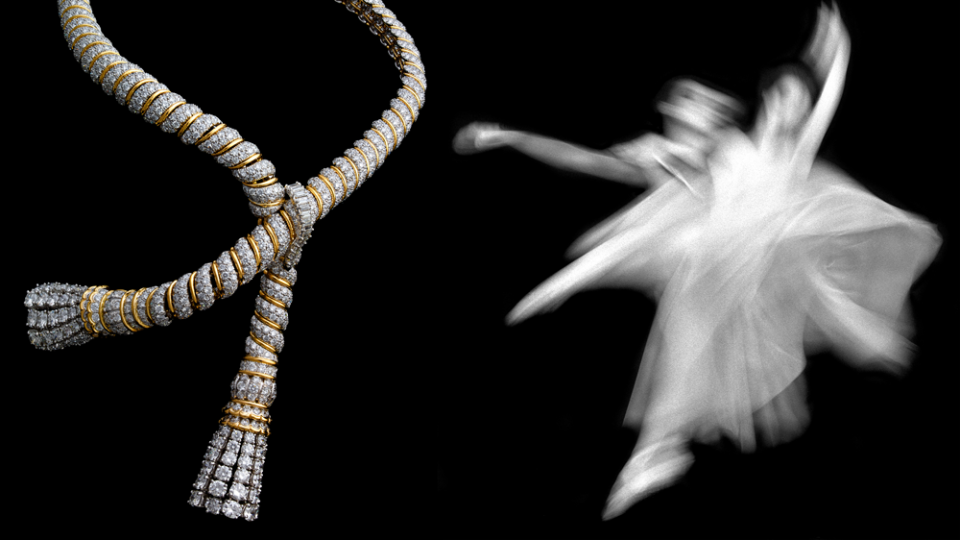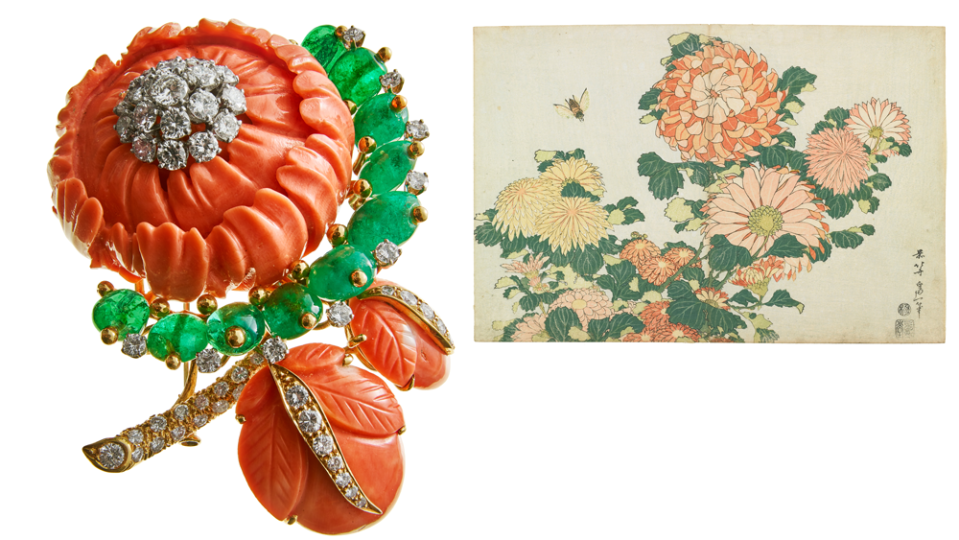Is Jewelry Art? A New Book Argues That David Webb’s Designs Are Nothing But

In 1963, society jeweler David Webb published a column in the New York Herald Tribune titled “Why Not Hang Gems?”
“Jewelry, though more personal than paintings, should be treated as great works of art, which they surely are,” Webb wrote. “Collections of jewelry should be exhibited to the public as are other great works of art. Everyone cannot own one or more of the world’s great paintings—nor can they own great jewels—but they can and do appreciate them.”
More from Robb Report
This $11 Million U.K. Mansion Is Like Living in a Contemporary Art Gallery
Barbara Walters's Dazzling Jewelry Collection Is Heading to Auction This Fall
Queen Camilla Wore One of Queen Elizabeth's Favorite Sapphire-and-Diamond Necklaces at Versailles

Tragically, Webb died in 1975 at the age of 50, from pancreatic cancer, but the company he founded has carried on producing his designs, thanks to the rich archive of drawings he left behind. Despite Webb’s best efforts, however, the argument implicit in every aspect of his oeuvre—jewelry is no different from art—is still cause for debate. And the author and jewelry historian Ruth Peltason would like to settle it.
In The Art of David Webb: Jewelry and Culture, a sumptuous coffee table book published by Rizzoli in September, Peltason makes a compelling case in support of Webb’s original thesis.
“It’s not that David Webb is the only jeweler whose work approaches art with a capital A, but I just happen to be the girl driving that car and that car is David Webb,” Peltason tells Robb Report. “He was self-educated and didn’t have the guardrails most of us learn to put up in college.

“Certain people, they have bon gout—good taste,” she adds. “And he had an instinct for good design. I don’t think he really fussed with wearability—it didn’t matter to him. A painter doesn’t design for the size of your house, a photographer doesn’t care what color your couch is. The real couturier designs to create the fullest expressions of who they are.
“David Webb would say, ‘This is my atelier and I’ll design whatever I want.’ So when you step back and look at it that way, you get away from jewelry as adornment or accessory, and you see it as art.”

A shortcut to that understanding lies in Peltason’s 256-page tome, which brims with images—by photographer Ilan Rubin—of Webb’s colorful, animal-inspired, and unapologetically maximalist jewels paired with artworks that may have inspired them.
In the case of the remarkable coiled dragon brooch on page 72, there is little doubt that Webb drew his inspiration for the piece, which is centered on a spectacular carved emerald, from a Scythian pommel in the shape of a coiled animal that appeared in an exhibition at the Metropolitan Museum of Art in late 1959.
“I’d read something Webb said about Scythian art, double-checked the dates of the show, and my God, he was there,” Peltason says. “I found the exhibition catalog.”
“I do think art across the centuries speaks to one another,” she adds.

The evidence threaded throughout the book is extremely convincing, from the coral and emerald chrysanthemum brooch Webb produced in 1966 (page 22), and the Japanese woodblock print, Chrysanthemums and Horsefly, by Katsushika Hokusai (c. 1833-34) that appears across from it; to the rubellite and ridged coral ring Webb’s atelier created in 2021 (page 221), which bears an orange and fuschia color scheme that mirrors a 1947 drawing by Henri Matisse, Palmette, shown on the previous page.
But that’s not all. “Look at the Christian Dior gown in my book next to the diamond earring, and all of a sudden, you go, ‘My gosh, there it is,’” Peltason says, referring to the couturier’s Eugénie dress on page 186, “a generous cascade of ever-widening tiers of pink nylon lace,” as she writes in the book, and the diamond and platinum Cosmo earrings from 2018 that seem to be in conversation with it.
To see the connections, “you have to let yourself go, be less of a scientist and more of a poet,” Peltason says. “You have to have a confident eye, because David Webb had a confident eye. To talk about Webb is to be prepared to follow his lead and look hard and look wide.”
Peltason may as well be speaking of her own deep dive into Webb’s rich history, which she first explored in 2010, when she was commissioned to write the jeweler’s definitive history by the company’s new owners, the estate jewelers Sima Ghadamian, Mark Emanuel, and Robert Saidian.
The result of that effort, David Webb: The Quintessential American Jeweler, was published in 2013, cementing his place in the pantheon of the 20th century’s finest jewelers.
“I think his biggest legacy is being the quintessential American designer,” Peltason says. “When I named the book, I wasn’t trying to name the book, I was trying to describe him. I love American design because it draws from everywhere. Webb gives us a very curated look at design across the millennia and comes up with something that feels modern. That’s not so easy.”
Best of Robb Report
Sign up for Robb Report's Newsletter. For the latest news, follow us on Facebook, Twitter, and Instagram.

